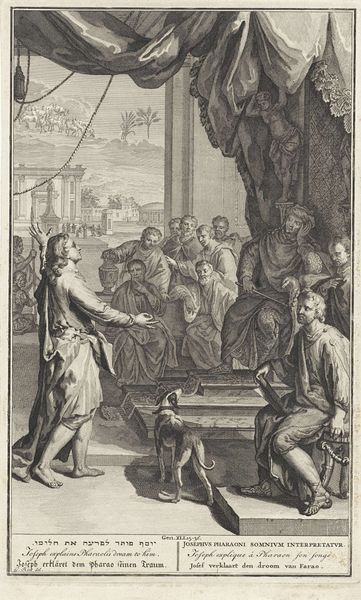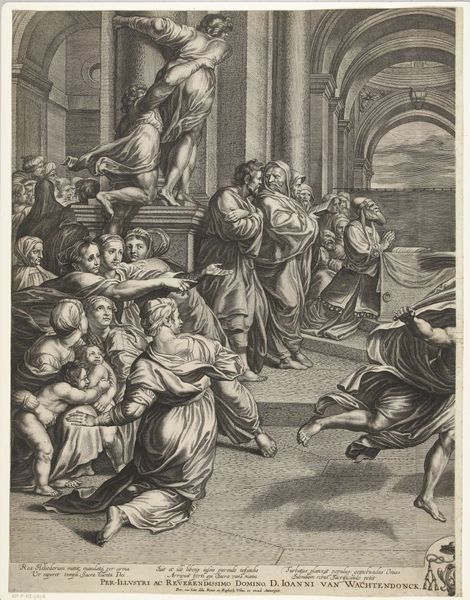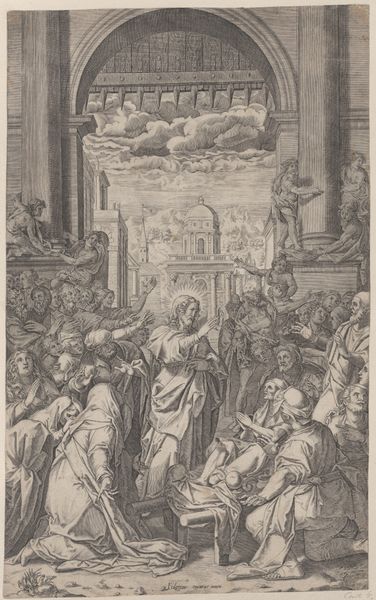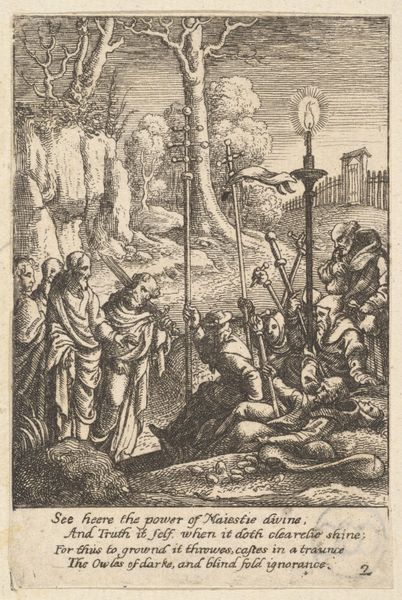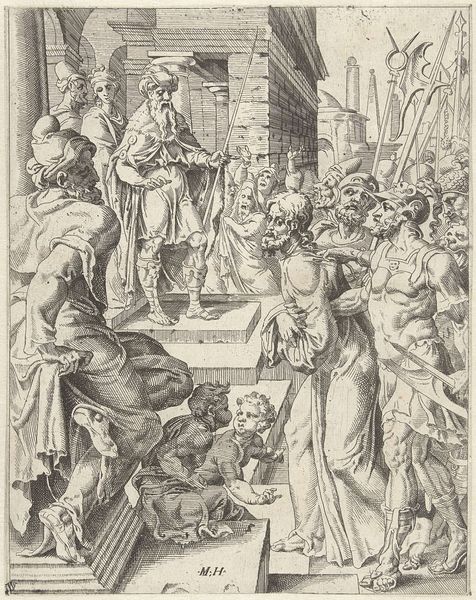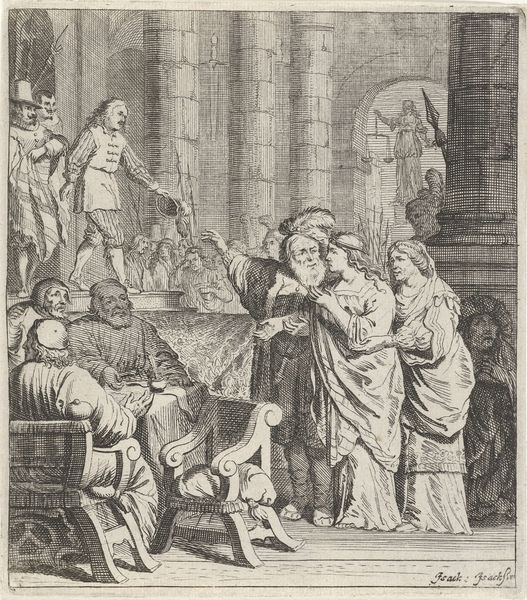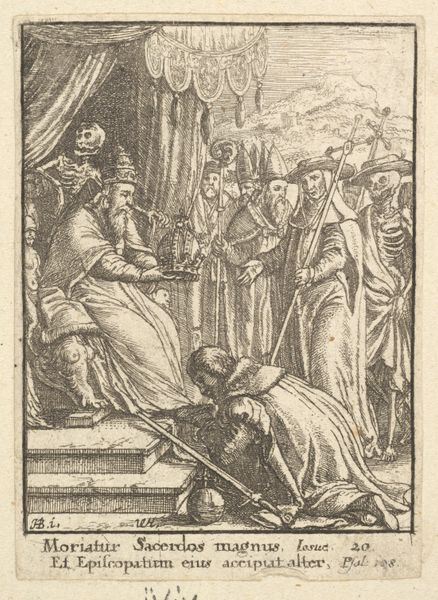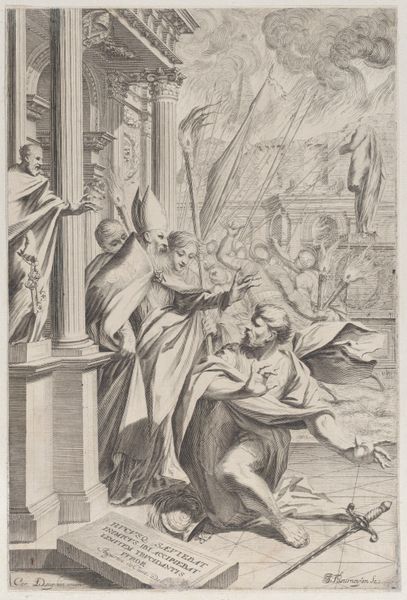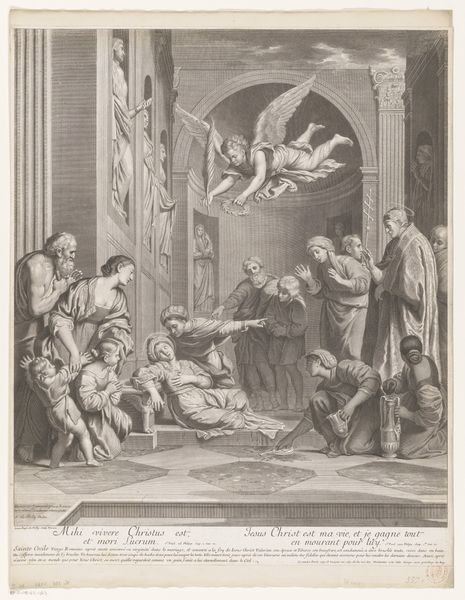
print, engraving
#
portrait
#
baroque
# print
#
figuration
#
pencil drawing
#
line
#
history-painting
#
italian-renaissance
#
engraving
Dimensions: height 558 mm, width 364 mm
Copyright: Rijks Museum: Open Domain
Giovanni Cesare Testa made this print, “The Last Communion of Saint Jerome,” in Rome sometime in the mid-17th century. It’s an etching, a printmaking process that relies on acid to bite lines into a metal plate, which is then inked and printed. Think about the labor involved. The artist would have carefully coated the plate with a waxy, acid-resistant ground, then used a sharp needle to scratch away the ground, exposing the metal beneath. The plate is then immersed in acid, which etches the design into the metal. The depth of the lines determines how much ink they hold, and therefore the darkness of the lines in the final print. The resulting image has a distinctive graphic quality – a network of fine lines creating tone and texture. It is a testament to the engraver's skill and patience, and gives us insight into the technologies of reproduction that were emerging at this time. Appreciating the making helps us to see this not just as a devotional image, but also as a product of skilled labor and technical ingenuity.
Comments
No comments
Be the first to comment and join the conversation on the ultimate creative platform.

